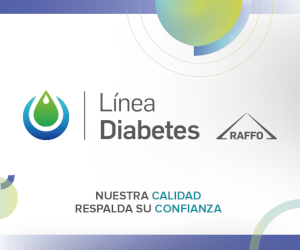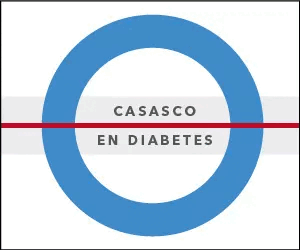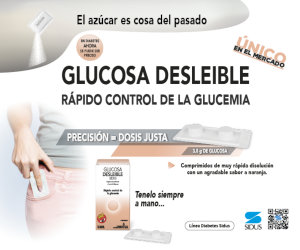Continuous glucose monitoring in type 2 diabetes mellitus
Keywords:
continuous glucose monitoring, type 2 diabetesAbstract
The use of continuous glucose monitoring (CGM) in people with type 2 diabetes (T2D) is expanding, with clear evidence of benefit in individuals with T2D who use basal insulin.
In the Mobile clinical trial, CGM use was associated with a 0.4% reduction in HbA1c1. This data is confirmed in real-world studies showing reductions of 1.1% and 1.4% at 3 or 6 months of follow-up, respectively2.] Furthermore, the use of CGM in T2D reduced hospitalizations for ketoacidosis by 75% and for severe hypoglycemia by 45% after one year of use3.
At the 2024 Advanced Technologies & Treatments for Diabetes (ATTD) Congress, a real-world study was presented that included 1,781 people with T2D being treated with GLP-1 receptor agonists. CGM use was associated with a reduction in HbA1c by 1.5% (from 9.8% at baseline to 8.3% at 6 months, p < 0.001)4. In another study, the simultaneous initiation of a GLP-1 agonist and a CGM system reduced HbA1c more than the addition of the GLP-1 agonist alone (-2.41 vs -2.06, p < 0.001)5.
Additionally, CGM is a great educational tool. A study conducted in Korea evaluated a nutritional education program associated with flash glucose monitoring or blood glucose monitoring, which used a very simple algorithm to help people make decisions about their diet based on glucose levels. Participants in the flash monitoring group had a greater reduction in fasting glucose (-16.5 mg/dL, P = 0.017), body weight (-1.5 kg, P = 0.013), HbA1c (-0.50%, P < 0.001), and better scores in the self-care questionnaire after the intervention6.
In summary, the evidence of the benefit of CGM in T2D is growing and is no longer limited to insulin users. Benefits also include its use as an educational tool to improve diet, enhance the benefits of GLP-1 agonists, and allow comprehensive evaluation of the impact of different therapies to optimize metabolic control.
References
I. Martens T, et al. Effect of continuous glucose monitoring on glycemic control in patients with type 2 diabetes treated with basal insulin: a randomized clinical Trial. JAMA 2021;325(22):2262-2272.
II. Carlson AL, et al. Flash glucose monitoring in type 2 patients managed with basal insulin in USA. BMJ Open Diabetes Research Care 2022;10(1):e002590.
III. Guerci B, et al. Important decrease in hospitalizations for acute diabetes events following FreeStyle Libre system initiation in people with type 2 diabetes on basal insulin therapy in France. Diabetes Technol Ther 2023 Jan;25(1):20-30.
IV. Miller E, et al. Free Style Libre improves HbA1c in people receiving GLP-1 therapy for type 2 diabetes. ATTD conference, March 6-9, 2024, Florence, Italy.
V. Wright E, et al. Initiating GLP-1 therapy in combination with Free Style Libre provides greater benefit compared to GLP-1 alone. ATTD conference, March 6-9, 2024, Florence, Italy.
VI. Choe JH, et al. Effects of patient-driven lifestyle modification using intermittently scanned continuous glucose monitoring in patients with type 2 diabetes. Results from the randomized open-label PDF Study. Diabetes Care 2022;45(10):2224-2230.
Downloads
Published
How to Cite
Issue
Section
License
Copyright (c) 2024 on behalf of the authors. Reproduction rights: Argentine Society of Diabetes

This work is licensed under a Creative Commons Attribution-NonCommercial-NoDerivatives 4.0 International License.
Dirección Nacional de Derecho de Autor, Exp. N° 5.333.129. Instituto Nacional de la Propiedad Industrial, Marca «Revista de la Sociedad Argentina de Diabetes - Asociación Civil» N° de concesión 2.605.405 y N° de disposición 1.404/13.
La Revista de la SAD está licenciada bajo Licencia Creative Commons Atribución – No Comercial – Sin Obra Derivada 4.0 Internacional.
Por otra parte, la Revista SAD permite que los autores mantengan los derechos de autor sin restricciones.





































